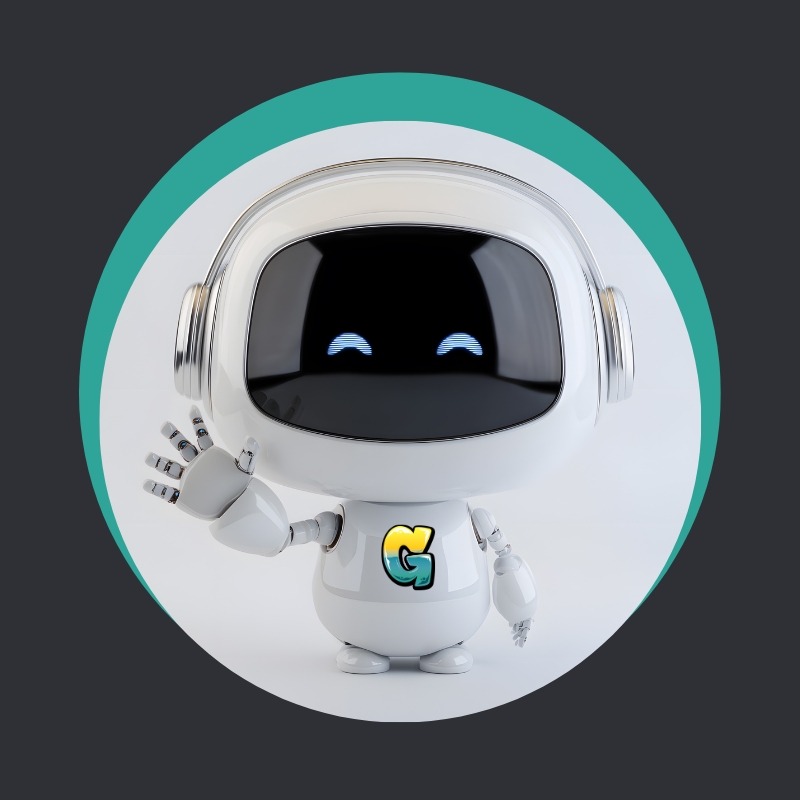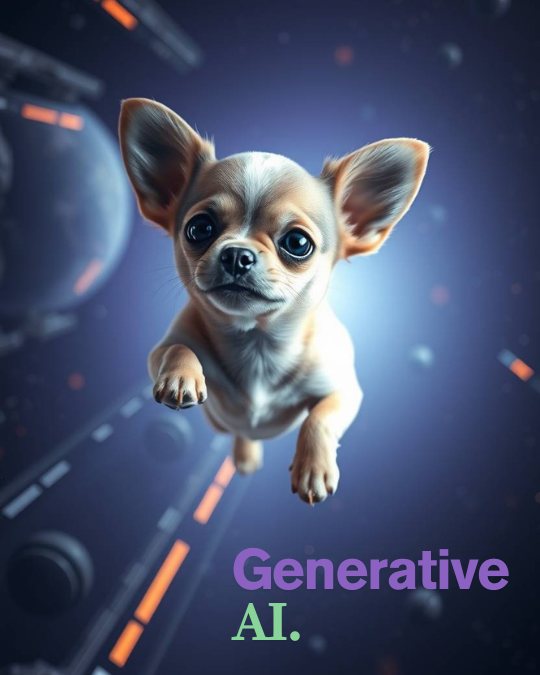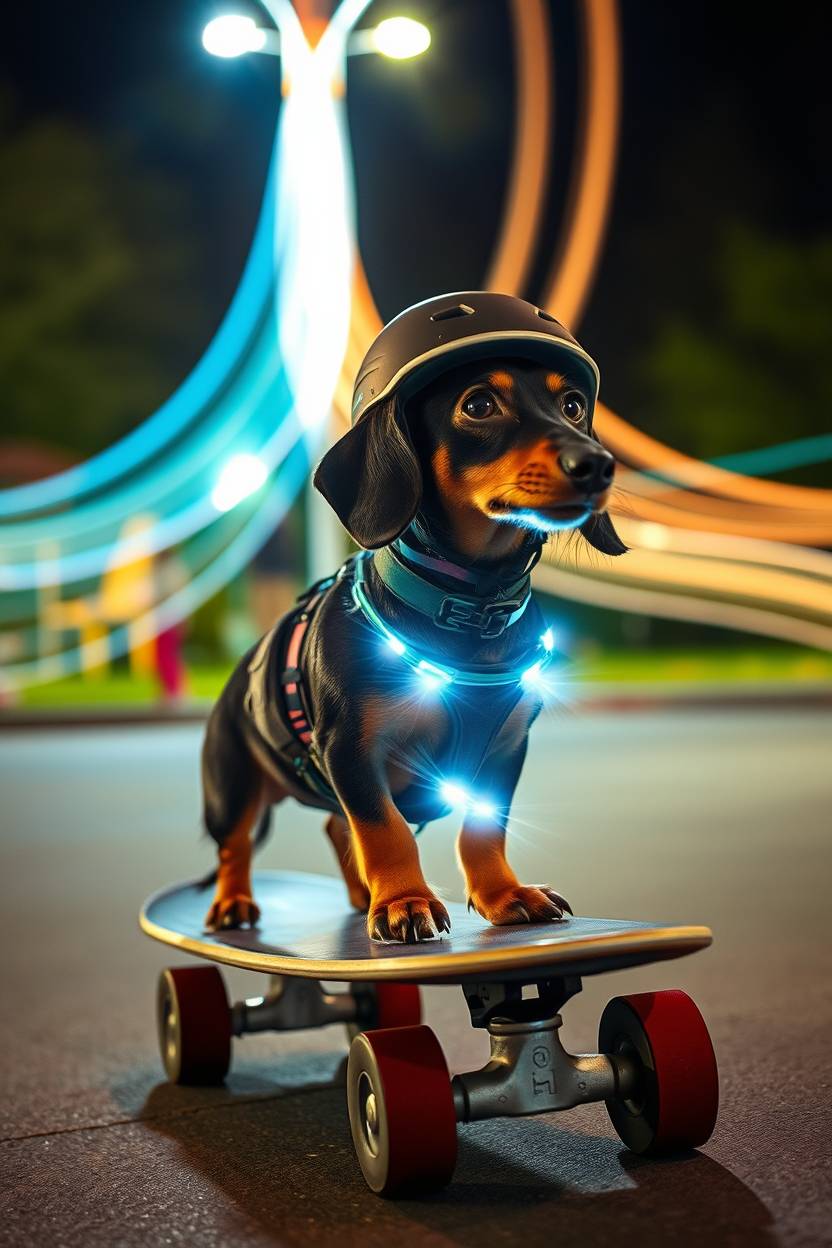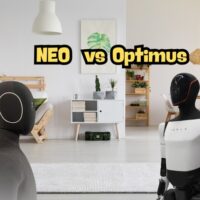With the recent announcement of the upcoming launch of the home robot NEO, it’s fair to say that 1X Technologies may be stepping ahead of Tesla’s Optimus. Still, each robot takes a slightly different approach.
Let’s put them side by side and break down the key differences.
NEO vs Optimus
A comparison of the core features of NEO and Optimus robots.
| Feature | NEO (1X Technologies) | Optimus (Tesla) |
|---|---|---|
| Primary Focus | Home and Domestic Security (Assistant) | General Use (Industrial and Domestic) |
| Design | Soft, lightweight (~30 kg), friendly appearance | Sturdy, heavier (~57–75 kg), exposed structure |
| Core AI | Built-in learning, powered by OpenAI (LLM) | Based on Autopilot tech (Imitation Learning) |
| Degrees of Freedom (Hands) | 22 DOF | High (human-like hand, strength-focused) |
| Dexterity & Sensors | High sensitivity (tactile sensors across body), smooth movements (tendon-driven actuators) | Stronger lifting ability, advanced AI for handling delicate objects |
| Projected Cost | ~$20,000 USD (or $499/month subscription) | Future goal of ~$10,000 USD (mass production) |
| Launch Timeline | First home deliveries expected in 2026 | Currently used in Tesla factories, consumer release date TBD |
🖐️ Manipulation Capabilities Compared
Both NEO and Optimus aim to replicate human hand dexterity, but they take different design and technology paths—each better suited for specific tasks.
NEO (1X Technologies).
NEO is designed for delicate tasks and safe interaction in home environments.
- Degrees of Freedom (DOF): Its hands feature 22 degrees of freedom, allowing for highly refined motion control.
- Finesse: Built to match human-level dexterity for handling small or fragile items—folding clothes, organizing shelves, or picking up an egg without cracking it.
- Tactile Sensors: Advanced sensors are distributed not just in the hands but throughout its soft body. Combined with 3D vision, this enables NEO to detect and respond to objects and people with greater sensitivity and safety.
- Actuators: Uses tendon-driven actuators for smooth, safe movements—critical for avoiding household accidents.
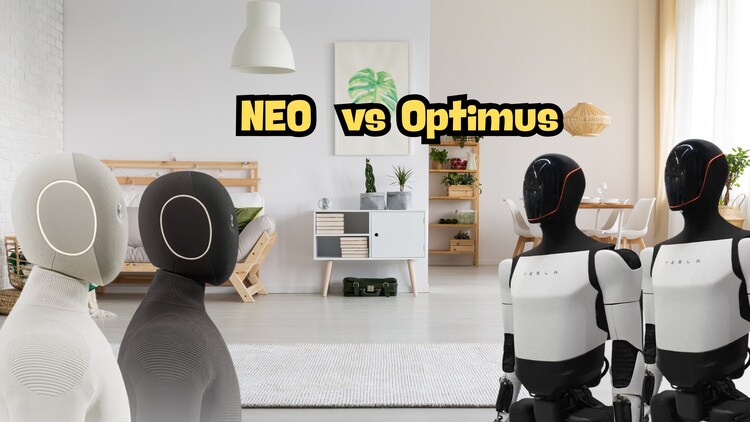
Optimus (Tesla)
Optimus is built for strength, speed, and general-purpose use in both industrial and domestic settings.
- Hand Design: Especially in its Gen 2 version, Optimus closely mimics the human hand structure (five fingers, opposable thumb).
- Load Capacity: While capable of handling delicate items (Tesla demoed Optimus picking up an egg), its build is optimized for heavier lifting and industrial tasks. It can carry up to 20 kg (45 lbs) and lift even more with its arms.
- AI Manipulation Tech: Optimus uses imitation learning—watching humans perform tasks and replicating them. This approach, derived from Tesla’s self-driving tech, helps it learn to handle objects intelligently.
- Speed: Thanks to its fully electric design, Optimus now moves faster and more agilely than earlier versions—key for factory efficiency.
The race to create humanoids is at a very advanced stage, and it’s only a matter of months before we see them in American homes. It’s expected that once the US market evaluates them and provides feedback, their distribution to other markets will begin.
